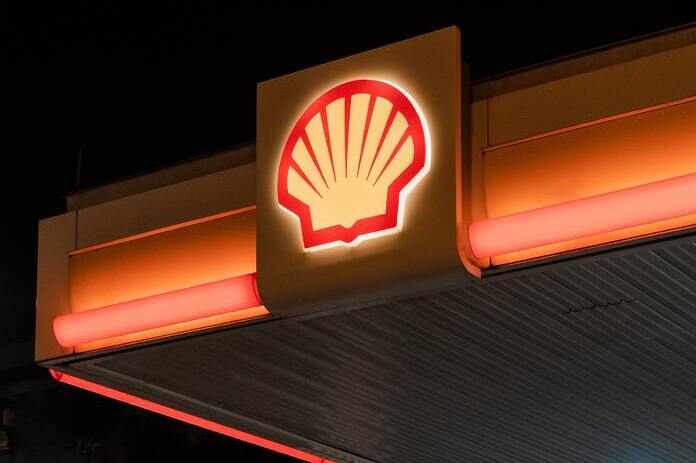Shell Stock (NYSE:SHEL)
Shell (NYSE:SHEL) is a British multinational oil and gas corporation with a market worth over $200 billion. European oil companies have consistently been more focused on low-carbon sources while trading at a lower valuation, a disconnect that will result in significant shareholder returns, as we’ll see throughout this piece.
Shell Efficiency
Shell performed admirably in the first quarter, earning $2 billion less than Exxon Mobil despite the latter’s twice the valuation.
The corporation produced $9.6 billion in adjusted earnings, resulting in a P/E in the mid-teens and a CFFO of $14.2 billion. With excellent downstream margins, the company has continued to operate effectively across its portfolio. The company’s aim for quarterly capital expenditures of around $6 billion translates into an annualized FCF yield of 16%.
The business has $44 billion in net debt, which it has significantly reduced with 2022 cash flow, and we expect its cash flow to remain strong. The corporation is still aiming for minimum shareholder distributions of 5-6%, with a dividend yield of 3.5% and $4 billion in recently announced share buybacks.
Shell’s Cash Flow Stability
The cash flow strength of the corporation is at the heart of its portfolio.
The company’s earnings fell somewhat. QoQ, despite lower prices, adjusted earnings fell just modestly. Although adjusted EBITDA increased due to excellent margins, CFFO declined significantly. Finally, the corporation earned a staggering $9.9 billion in FCF, annualized at a 20% yield, demonstrating the company’s FCF strength.
The fact that the company is able to do so while investing more than 10% of its market value in growth demonstrates its financial strength. Given the company’s reasonable debt yield, the company’s continuing FCF will permit continued shareholder rewards. The ability of the corporation to consistently cut its share count demonstrates its strength.
Positioning of Shell LNG
The company’s LNG portfolio, which it significantly expanded with the acquisition of BG Group, is a reflection of its strength.
During the last two quarters, the corporation achieved a record $11 billion in LNG earnings, demonstrating its winter strength. The company has a solid global portfolio, and volumes have remained high. I anticipate that demand for natural gas as a transitional fuel, as well as a shift away from Russian gas, will result in ongoing robust LNG demand.
The company’s exceptionally strong portfolio in this area will continue to serve as a crucial transitional buffer.
Shell’s Future Prospects
The enterprise has considerable future potential, demonstrating that the $25 billion investment was not in vain.
A number of big projects are getting underway at the company. Within the next year, the business expects to begin attributable crude production of around 130 thousand barrels per day. In addition, the company has more than 1 gigatonne of renewable energy capacity and new CO2 capture projects in the works. Things become more intriguing as we approach 2025 and beyond.
The company has 115 thousand barrels per day of sanctioned projects in the works, as well as nearly 2 gigatonnes of renewable energy. Much more exciting, however, are the company’s approved LNG projects. The company’s three projects are planned to generate 10 million tons of LNG per year.
LNG Canada could double in size, resulting in a total of 16 mtpa attributed to the corporation. That is high-margin production that can contribute billions of dollars to the company’s earnings. It is once again a strong transitional fuel for the company.
Shell Comparative Analysis
The valuation disparity between American and European energy corporations is apparent. In 2022, FCF for European firms yielded 18%, while FCF for American companies yielded 11%.
While earning significantly more than Chevron and nearly as much as Exxon Mobil on all financial indicators, Shell’s enterprise value of $250 billion is 20% less than Chevron and 45% less than Exxon Mobil.
This is despite Shell having, in my opinion, a stronger transitional portfolio in terms of both renewable energy and LNG. This obvious valuation disparity demonstrates how Shell outperforms its American oil competitors.
My Opinion
There is a distinct disparity in the valuation of European and American energy companies. Given Shell’s assets’ comfortable double-digit return, I believe this is a clear opportunity. The company’s dividend yield exceeds 3.5%, and it is constantly repurchasing shares.
At the same time, it is actively investing in future growth. Its debt has been reduced, allowing greater funds to be allocated to either growth or shareholder returns. Regardless of how the money is spent, Shell stock is a wise long-term investment.
Thesis Peril
The most serious threats to my premise are twofold. The first is a significant drop in demand for LNG or renewable energy, which jeopardizes the company’s transition plans. The second is the polar opposite: significant pressure to reduce emissions, which will harm the company’s existing operations’ revenues. The company’s net-zero goal is set for 2050, but it may face external pressure to cut it sooner.
However, I believe that the company’s risks are substantially lower than those of its American contemporaries, who are hesitant to abandon their established business methods.
Conclusion
Shell has an amazing asset portfolio. This is especially true given its $200 billion valuation in comparison to its American contemporaries, who have a larger valuation. The company’s debt load has also reached its sustainable and moderate $44 billion aim. This means that additional funds do not need to be redeployed toward its debt.
The cash can be used for share buybacks, dividends, and growth. It has a number of intriguing growth projects that will be launched over the next few years. Overall, I anticipate the company will continue generating double-digit returns, making Shell stock an attractive investment.
Featured Image: Unsplash @ Keming Tan

















